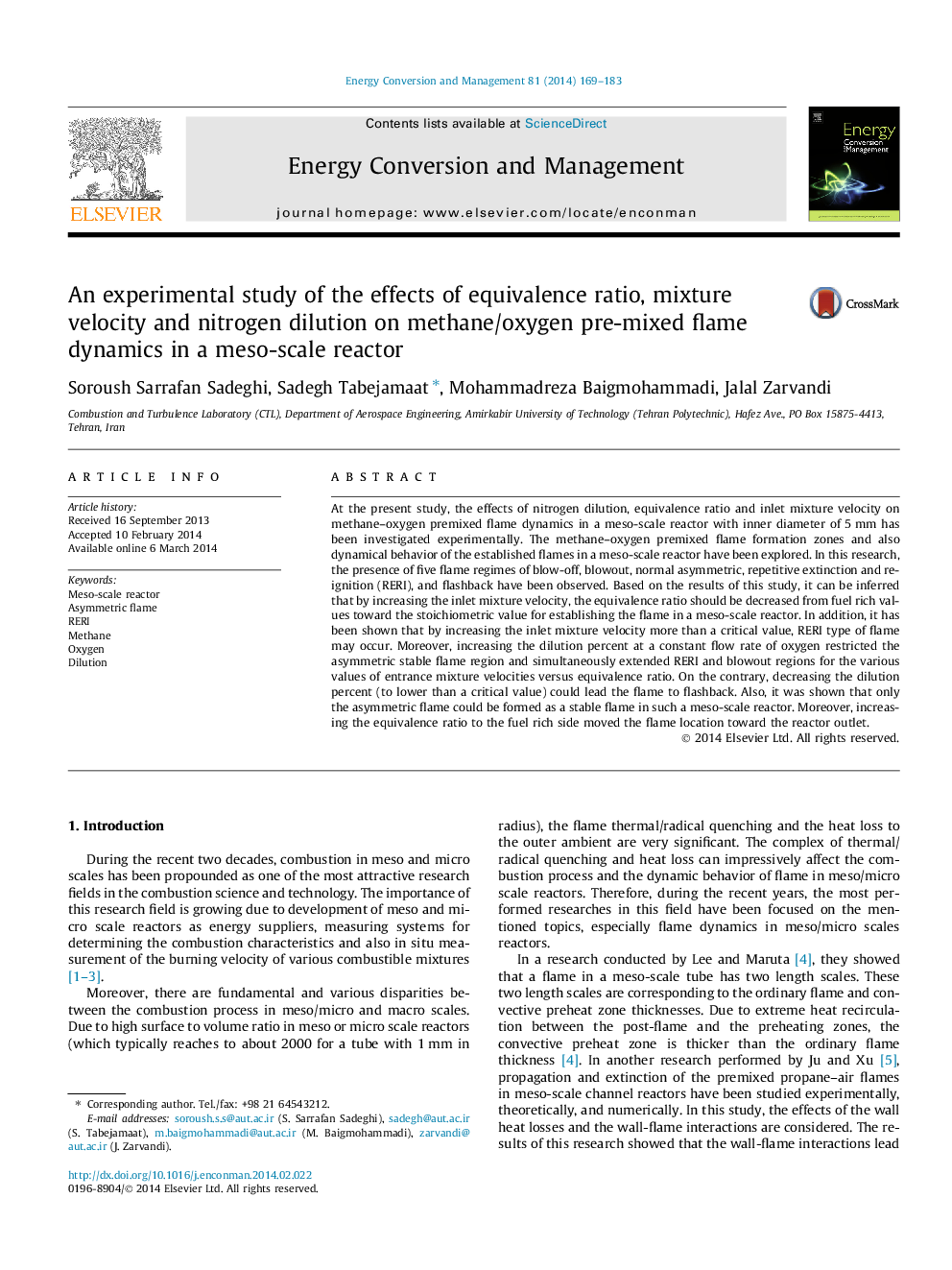| Article ID | Journal | Published Year | Pages | File Type |
|---|---|---|---|---|
| 763994 | Energy Conversion and Management | 2014 | 15 Pages |
•Flame regimes of stable asymmetric and RERI have been observed in meso scale reactor.•By increasing the inlet velocity, the equivalence ratio is decreased to near unity.•The increase of velocity more than a level reduces the flame presence in the reactor.•Increasing the dilution percent restricts the asymmetric stable flame region.•In such a meso scale reactor just asymmetric flame as a stable flame can be formed.
At the present study, the effects of nitrogen dilution, equivalence ratio and inlet mixture velocity on methane–oxygen premixed flame dynamics in a meso-scale reactor with inner diameter of 5 mm has been investigated experimentally. The methane–oxygen premixed flame formation zones and also dynamical behavior of the established flames in a meso-scale reactor have been explored. In this research, the presence of five flame regimes of blow-off, blowout, normal asymmetric, repetitive extinction and re-ignition (RERI), and flashback have been observed. Based on the results of this study, it can be inferred that by increasing the inlet mixture velocity, the equivalence ratio should be decreased from fuel rich values toward the stoichiometric value for establishing the flame in a meso-scale reactor. In addition, it has been shown that by increasing the inlet mixture velocity more than a critical value, RERI type of flame may occur. Moreover, increasing the dilution percent at a constant flow rate of oxygen restricted the asymmetric stable flame region and simultaneously extended RERI and blowout regions for the various values of entrance mixture velocities versus equivalence ratio. On the contrary, decreasing the dilution percent (to lower than a critical value) could lead the flame to flashback. Also, it was shown that only the asymmetric flame could be formed as a stable flame in such a meso-scale reactor. Moreover, increasing the equivalence ratio to the fuel rich side moved the flame location toward the reactor outlet.
